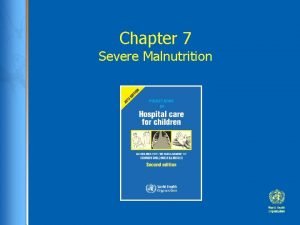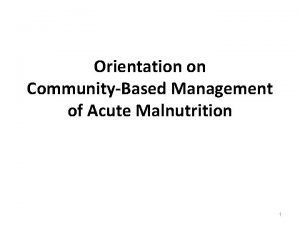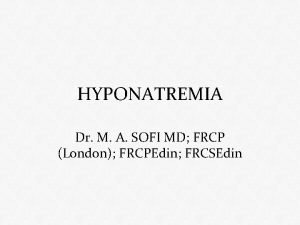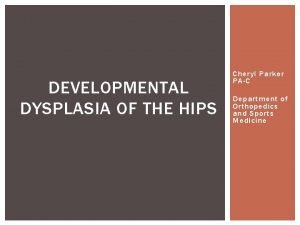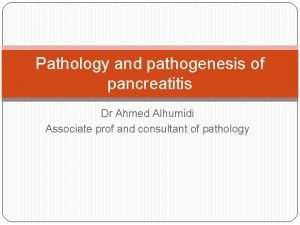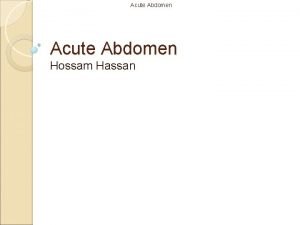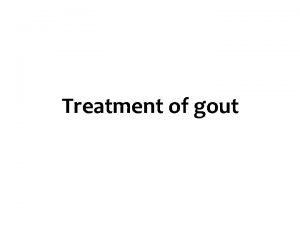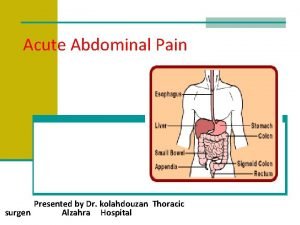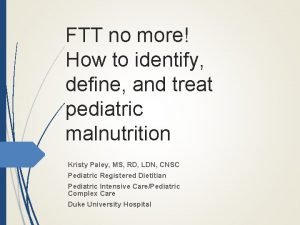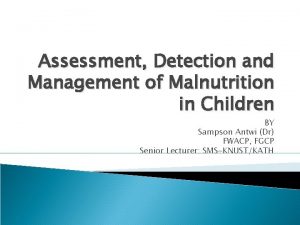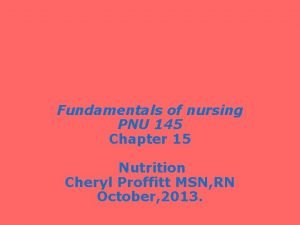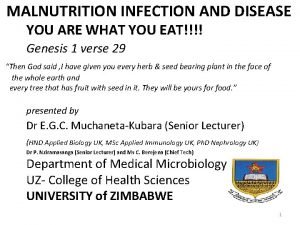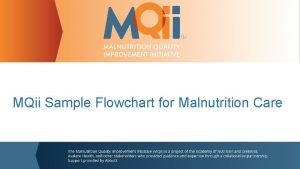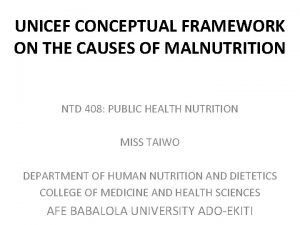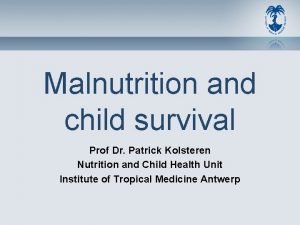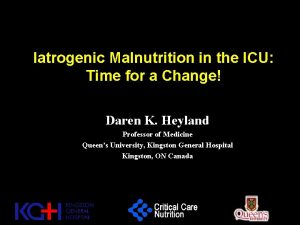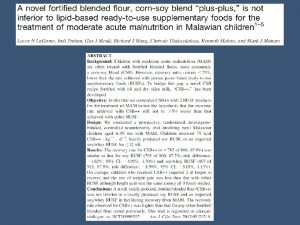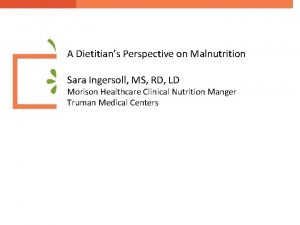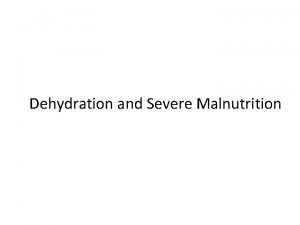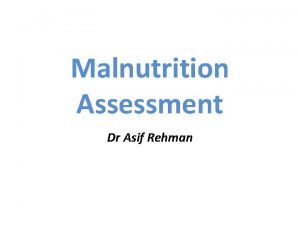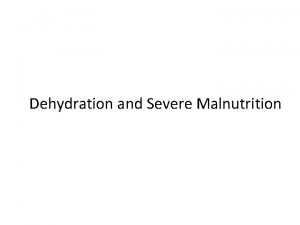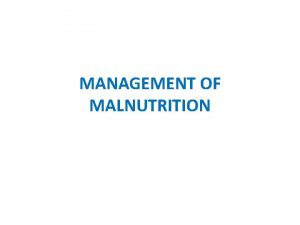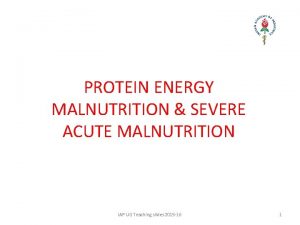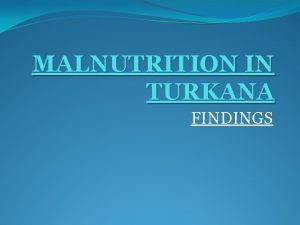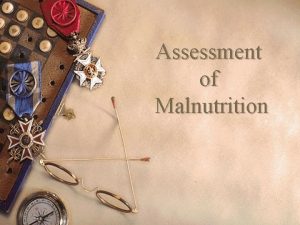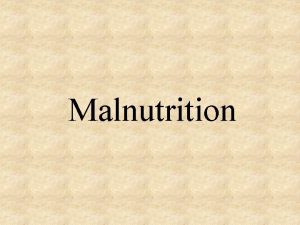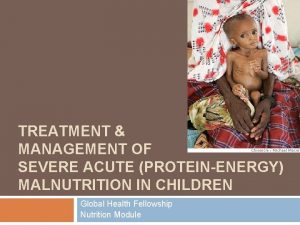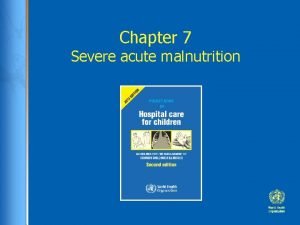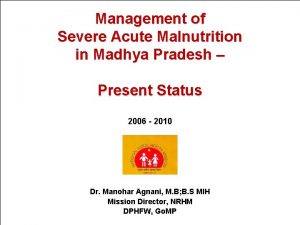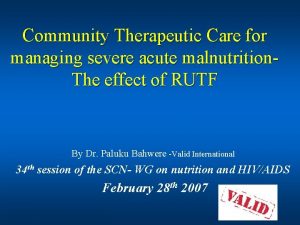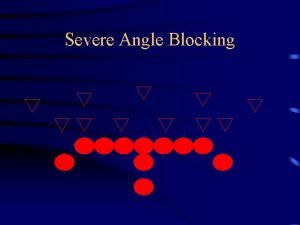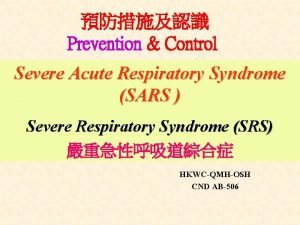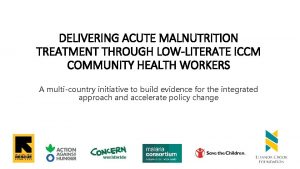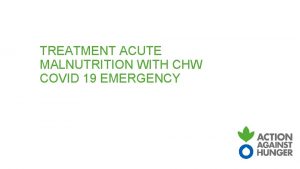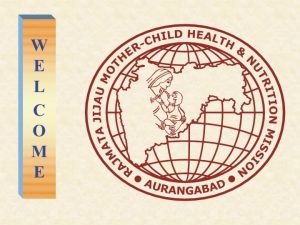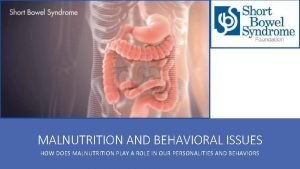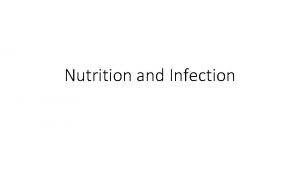Treatment of severe acute malnutrition Experience from developmental


























- Slides: 26

Treatment of severe acute malnutrition Experience from developmental context Jimma, Ethiopia Tsinuel Girma Asst professor of Pediatrics and Child Health Jimma University Mar 2008 (2000)



Child health indicators

Current U 5 MR trend Vs MDG trend

500, 000 under-5 dying each year Ranking 6 th in the world 72 % preventable f Other, 2% Measles, 4% AIDS, 1% Neonatal, 25% Diarrhea, 20% Malnutrition 57% HIV/AIDS 11% Malaria, 20% Pneumonia, 28%

Nutritional Status of Children Under Age Five

Key interventions selected for targeted condition NATIONAL STRATEGY FOR CHILD SURVIVAL IN ETHIOPIA , 2005 Malnutrition Prevention/promotion Breast feeding Complementary feeding Nutrition advice and supplementation Vitamin A supplementation PMTCT Measles vaccination Family Planning Clinical care Management of severe acute malnutrition Vitamin A Zinc Nutrition advice


In-patient treatment- hospital based • Opened as part of pediatric in-patient service (Feb 2004) • Maximum capacity of 30 patients • Staff : Feeders, nurses , interns , residents and consultants • Implementation of national protocol • Open 24 hrs

Achievements

Disciplined treatment, improved practicum set-up, new outlook about treating SAM and interest in nutrition related research

• More than 1350 patients treated so far most with co-morbidities (TB/HIV) • Death Rate < 6% • ARWG ~ 15 g/kg/d • ALOS 4 weeks


Observed and expected deaths from Jimma TFU using Prudhon Index

Out- Patient Treatment • • Context In 5 Health centers using RUTF (Dec 2005) Community mobilization and screening MOH is primarily responsible UNICEF provides RUTF and antibiotics Concern – Ethiopia: training Jimma University- Department of Pediatrics and Child Health

Performance Post-training follow –up, after 2 months in nine HCs showed • Implementation within 34 days (20 -58) • Enthusiastic health workers • Good acceptance by mothers and caregivers (also demonstrated in another study) But • Poor adherence to protocol ( one in five) • Poor medical recording • No proper evaluation of appetite – (field tested )

Types of malnutrition on admission n=324, four health centers

Treatment outcome

Outcome • RWG for recovered children was 6. 0 g/ kg/d and no difference between types of malnutrition • RWG for defaulters < 5 g/kg/d • Length of stay for all recovered children was 36. 0 and 39. 0 days, respectively.

different outcome between HCs but not on the type of malnutrition

Malnutrition and HIV/AIDS • Variable according to implementing agency so NO harmonized and standard care • Screening for SAM and treatment in adults is practically absent in most programs • Planned RCT in Jimma on supplementary feeding for patients on HAART

Challenges • • Staff turnover Supply breaks Sharing/ selling of RUFT Poor recording Protocol breach High defaulter rate Payment for drugs

Conclusion • Appropriate treatment of SAM and integration to routine health care delivery can save many lives • There is favorable environment: Interest in health service managers at different level, motivation of health workers and mothers by the treatment outcome • Quality of care has to be improved through constant supportive supervision, in-service training and strengthening pre-service training as long term solution

Conclusion … • Develop local expertise by working closely with higher learning institutions which is crucial for sustainability of new initiatives, research and development • There is an urgent need for more operational researches

 Malnutrition case
Malnutrition case Moderate acute malnutrition
Moderate acute malnutrition Serum osmolality
Serum osmolality What is life
What is life Developmental dysplasia of hip treatment
Developmental dysplasia of hip treatment What is acute hemorrhagic pancreatitis
What is acute hemorrhagic pancreatitis Biliary colic treatment
Biliary colic treatment Acute abdomen treatment
Acute abdomen treatment Gout treatment
Gout treatment Acute abdomen treatment
Acute abdomen treatment Imprinting psychology
Imprinting psychology Continuity vs discontinuity
Continuity vs discontinuity What is indirect experience
What is indirect experience Malnutrition definition
Malnutrition definition Baggy pants sign in malnutrition
Baggy pants sign in malnutrition Purpose of malnutrition
Purpose of malnutrition Conclusion on malnutrition
Conclusion on malnutrition Malnutrition conclusion
Malnutrition conclusion Malnutrition flowchart
Malnutrition flowchart Unicef conceptual framework for malnutrition explained
Unicef conceptual framework for malnutrition explained Malnutrition pics
Malnutrition pics Iatrogenic malnutrition
Iatrogenic malnutrition Z score for malnutrition
Z score for malnutrition Malnutrition
Malnutrition Aspen criteria for malnutrition
Aspen criteria for malnutrition Resomal composition
Resomal composition Abcd of nutritional assessment
Abcd of nutritional assessment
